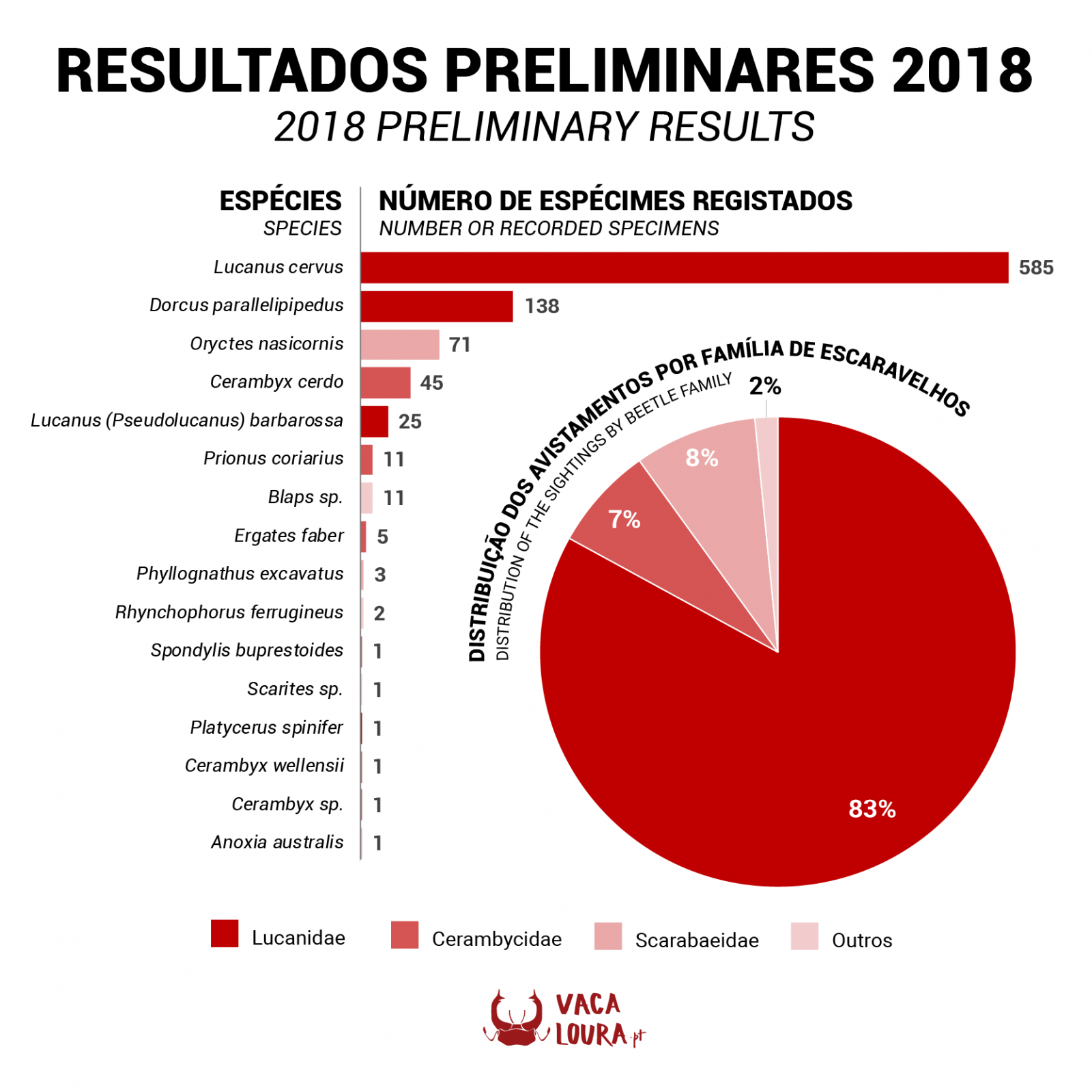Apesar de ainda recebermos alguns registos diariamente, já temos resultados preliminares extremamente satisfatórios da campanha de 2018. Até agora confirmamos o avistamento de 902 escaravelhos de cerca de 15 espécies diferentes.
O foco que se tem feito na família Lucanidae, que este ano obteve registos das quatro espécies que ocorrem no nosso país (Lucanus cervus, Lucanus (Pseudolucanus) barbarossa, Dorcus parallelipipedus e Platycerus spinifer), leva a que uma grande fatia dos registos seja sobre estas espécies (83%). A vaca-loura (L.cervus), a espécie foco deste projeto , é normalmente identificada como uma espécie bandeira (que ajuda a alertar os cidadãos para a conservação de um grande número de espécies ligadas a esta) e por isso temos também recebido registos de muitas outras espécies de grandes dimensões e decompositoras de madeira morta (17% dos registos). Estes dados ajudam a suportar esta definição de espécie bandeira, uma vez que ao juntar esforços para a conservação da vaca-loura, temos conseguido obter dados de muitas outras espécies que normalmente são esquecidas.
Obrigado a todos os cidadãos pela ajuda e esperamos continuar a receber registos durante mais algum tempo.
ENGLISH
2018 PRELIMINARY RESULTS VACALOURA.pt
Although we still receive a few records daily, we already have extremely satisfactory preliminary results from the 2018 campaign. So far we have confirmed the sighting of 902 beetles of about 15 different species.
The focus on the Lucanidae family, which this year obtained records of the four species that occur in Portugal (Lucanus cervus, Lucanus (Pseudolucanus) barbarossa, Dorcus parallelipipedus andPlatycerus spinifer), leads to a large number of the records to be of these species (83%). The European Stag Beetle (L.cervus), the focus species of this project, is usually identified as a flagship species (which helps to alert citizens to the conservation of a large number of species linked to it) and therefore we have also received records of many other species that are large and that also decompose deadwood (17% of the records). These data help to support this definition of flagship species since while we join efforts for the conservation of the stag beetle, we have been able to obtain data from many other species that are usually forgotten.
Thanks to all citizens for the help and we hope to continue to receive records for a little longer.
Partilhar nas redes sociais
0partilha(s)

